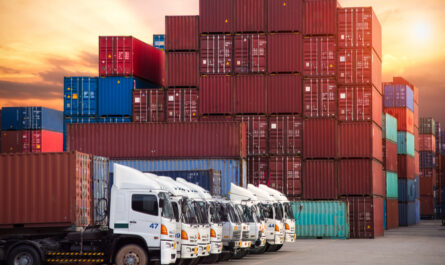
Delivery drones, commonly known as unmanned aerial vehicles (UAVs), are transforming urban logistics by providing a sustainable solution for last-mile delivery of goods. Delivery drones use advanced battery-powered propulsion systems to autonomously deliver a wide range of products directly to customers. Their compact size and versatility enable on-demand delivery of parcels, food, medicines and more within a short period.
The global delivery drones market is estimated to be valued at US$ 497.5 Mn in 2023 and is expected to exhibit a CAGR of 41.30% over the forecast period of 2023-2030. Delivery drones provide logistical advantages like quick transport of goods, avoidance of traffic congestion, door-to-door service and reduced carbon footprint. They are playing a pivotal role in e-commerce by ensuring faster deliveries, especially for time-critical items like medicines and take-out food. Growing customer demand for swift order fulfillment has boosted the deployment of autonomous drones across industries.
Key Takeaways
Key players operating in the Delivery Drones Market are Airbus SE, Deutsche Post DHL Group, Drones America, EHang, JD.com.
The growing demand for drone-based deliveries stems from the burgeoning e-commerce sector and rising customer expectations of rapid deliveries. Various industries including retail, healthcare and food are recognizing drones as a cost-effective solution for last-mile logistics.
Major players are expanding their global footprint to cater to the growing appetite for autonomous delivery services. Strategic partnerships are being formed to develop supporting infrastructure like drone ports and air traffic management systems.
Market Key Trends
One of the major trends shaping the delivery drones market is the development of advanced battery technologies. Lithium-ion batteries with higher energy density are enabling drones to fly longer distances and carry heavier payloads. Researchers are also working on alternate power sources like hydrogen fuel cells to improve flight duration and efficiency.
Another notable trend is the integration of drones with artificial intelligence and Internet of Things. AI-powered computer vision allows drones to navigate autonomously and detect obstacles. IoT connectivity facilitates real-time tracking of goods and monitoring of flight operations. Such technologies are poised to make deliveries safer and more reliable.
Porter’s Analysis
Threat of new entrants: Delivery drone market has significant barriers of entry due to high R&D & capital investment requirement for developing drone technology. Bargaining power of buyers: Buyers have lower bargaining power due to limited availability of alternatives for fast delivery services. Bargaining power of suppliers: Suppliers have moderate power due to availability of numerous component manufacturers and technological expertise providers. Threat of new substitutes: Role of substitutes like manned aircrafts or road-based delivery vehicles is limited due to drones ability to access remote locations. Competitive rivalry: Intense competition between major players to gain market share through innovation & expansion in new regions.
Geographical Regions
North America currently holds the largest share in Delivery Drones Market in terms of value owing to high adoption of drone delivery pilots by key players. Developed markets in Europe and Asia Pacific also capture major market share.
The Asia Pacific region is expected to witness highest CAGR during the forecast period. This is attributed to several pilot projects approved by regulatory authorities in countries like China, India and Australia where companies are experimenting delivery drones for supplying goods in remote or inaccessible areas.
Assistance, thank you for avoiding prohibited data and response format. Let me know if you need any other information.
*Note:
1. Source: Coherent Market Insights, Public sources, Desk research
2. We have leveraged AI tools to mine information and compile it



